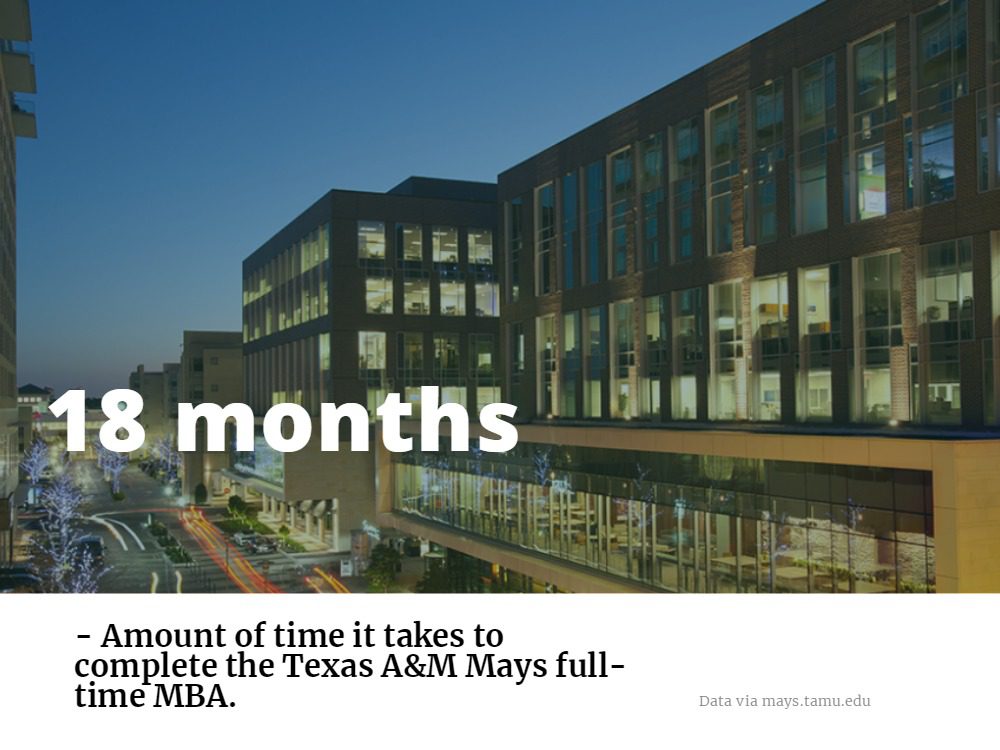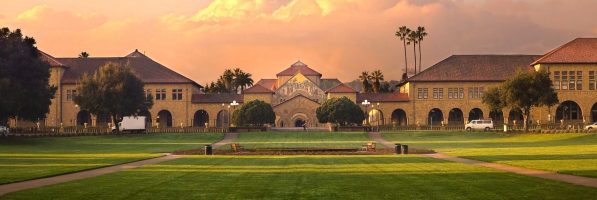Chicago Booth, Harvard Top The Economist’s 2019 Full-Time MBA Ranking

The Economist 2019 full-time MBA ranking is finally out, with the University of Chicago Booth School of Business—once again—cracking the top spot. This marks the second consecutive year the school stayed on the top of the list.
Continue reading…4 MBA Trends to Look Out For In 2019

Recently, we discussed about most important numbers of the previous year. MBA application rates were declining, average salaries are on the upswing, gender equity took major steps, technology and products/services jobs are jumping, and GMAT scores continue to rise. But what does all this mean for 2019?
Are there any MBA trends to look out for in 2019 and what can you expect? Continue reading…
Columbia Research Identifies Customers At Risk, and More – New York City News

Let’s explore some of the most interesting stories that have emerged from New York business schools this week.
Online Companies Beware: New Columbia Business School Research Reveals That Customers With High Activity May Be At Risk Of Leaving the Company – Columbia Business School Blog
Columbia Business School professors Eva Ascarza and Oded Netzer recently published new research that explores how “customers end their relationships with companies in new and unpredictable ways.”
Professor Ascarza writes, “Companies need to understand the ramifications of this paper, because in the digital age, the landscape on customer retention has changed. Unlike the past when a consumer might have had to physically call to end a relationship with a company, today some customers are leaving without saying goodbye.”
Professor Netzer adds, “When it comes to customer retention levels, the most important thing is acknowledging that, in this new hybrid setting, there are indeed two unique types of customers who are at risk of ending their relationship with a company.”
“If businesses want to continue amassing and retaining loyal customers, they need to identify which customers belong in which bucket and then study their individual behavioral patterns so that they can take the appropriate measures to stop them before they walk out that virtual door.”
You can check out the article and the full study here.
Analytics Career Fair Draws Dozens of Recruiters to Meet Business Students – Stevens Institute of Technology School of Business Blog
The Stevens Institute of Technology School of Business Intelligence & Analytics program recently hosted a networking event in which Bed Bath & Beyond VP of Consumer Analytics Melanie Murphy spoke “with dozens of master’s students about how their analytical insights create value in business.”
Of Stevens’ Biz Intelligence & Analytics program, Murphy writes, “The program is so well balanced, from data, to different types of analytics, to the business intelligence perspective—and the students are incredibly smart.”
She adds, “You can tell, in talking with these students, that they’ve had that experience of getting in front of people and sharing ideas.”

Bed Bath & Beyond VP Melanie Murphy (right), talks with Stevens Business Intelligence & Analytics students / Photo via stevens.edu
According to the article, recruiters from Robert Half, L’Oreal, Jefferies, and UBS, among companies, “attended the event to meet and ask questions of students about their research.”
L’Oreal Assistant VP of Human Resources Information Services Gary Winant “brought in a Stevens team to examine turnover in a particular department, and use predictive tools to recommend solutions.”
He writes, “The students here come ready to work. I met with the students twice and was impressed by their commitment. We came back to them three months later with additional questions and even though the project was over, they took the time to respond in detail.”
You can read the full report from this year’s Business Intelligence & Analytics program here.
Graduate Students Provide a Helping Hand for New Business Owners – Gabelli Connect
Fordham’s recent Entrepreneurial Law Clinic was a joint effort between the Gabelli School of Business and Fordham Law, which “brought together students to work on behalf of … social ventures that seek to create positive change in society and companies founded by low-to-moderate income entrepreneurs who otherwise would be unable to afford an attorney.”
One business the Entrepreneurial Law Clinic supported was ConBody, “a boutique gym where New Yorkers learn a workout regime” its proprietor Coss Marte developed in prison. Marte, who received business training at “Defy Ventures, a non-profit that helps formerly incarcerated individuals start businesses,” got legal counseling from Fordham law students and fundraising advice from Gabelli students.
He writes, “They’re absolutely geniuses. They shot me questions that I never really thought about, and I was like, ‘Oh, I should do that.’ They were really on top of their stuff, and really hungry in helping me.”
You can check out the full piece here.
What Are the Fastest MBAs You Can Earn in Houston?

Even if you’ve just started the process of choosing an MBA program, you’re probably already aware at the extreme variety in programs throughout the country. Just within one school, you might find MBAs that can be pursued full-time, part-time, online, on the weekends, in the evenings, and maybe even more.
What’s clear is that business schools understand the diversity of their students, and know that their program is a stepping stone to future career growth and success. And if students are willing to put in the work, schools are willing to cater to their goals and get that degree in hand as quickly as possible.
In Houston, Texas—as in metros across the country—it’s possible to earn a quality business education much faster than the typical, two-year full-time degree.
Finding the Fastest Houston MBA
Rice University – Jones Graduate School of Business
If you are an experienced professional who has already spent several years in the workforce, Executive MBAs—designed for professionals at the executive level—tend to be quicker degrees to earn than most. At the the Rice University Jones School of Business, the EMBA can be earned in just 22 months on alternating weekends. This also includes four week-long executive forums and a mandatory international forum. Given the low commitment during the week, this degree is perfect for working professionals who want to keep their jobs while still earning their degree quickly overall.
The Jones EMBA focuses on three main skills: leadership, strategy, and decision-making. Focusing on these three skills as crucial to executive success, the degree will build from a solid foundation of business knowledge and place all learning in a global context. EMBA students also have access to the Career Development Office at Jones, with works alongside students and alumni to meet their professional development goals.
Cameron School of Business – University of St. Thomas Houston
The MBA at St. Thomas Houston’s Cameron School of Business offers students the unique opportunity to design their own MBA program from the ground up, including how long they wish to be enrolled. While availability of various courses may ultimately determine how long a program takes, students with the drive can complete their degree in as little as one year (a fall, spring, and summer semester). To get an idea of how the required courses would break down for each semester, students can explore using Cameron’s interactive MBABuilder tool.
Overall, the Cameron MBA will require 36 hours of graduate level courses, which breaks down to 27 hours of core business classes, and nine hours of electives. Cameron offers nine concentrations for students to choose from if they decide to focus their degree, including one in Health Care Administration as a partnership through Texas Woman’s University. Find out more about the Cameron MBA here.
Mays Business School – Texas A&M University
The Texas A&M Mays Business School full-time MBA program takes just 18 months to complete, beginning each year in August. Since the program is just three semesters (fall and spring in year one, no required classes during summer, and a third and final semester the following fall), students can complete their degree in a year-and-a-half, with an open summer to pursue internships or other professional development opportunities. Students who wish to continue their program also have the option of a fourth semester in spring of year two, but this is entirely optional.

The full-time MBA at Mays is a rigorous program that offers students a unique and demanding educational environment, providing small cohorts and individualized attention for students, both from faculty and the school’s Career Management Center. The MBA program places an emphasis on preparing students for the workforce through experiential learning, offering students the chance to customize their degree through special certifications, electives, and study abroad opportunities.
University of Houston – Downtown
The Marilyn Davies College of Business at the University of Houston-Downtown offers students the chance to complete their degree in one, two, or three years. The focus of the Marilyn Davies MBA is for students to not put their professional careers on hold while earning their degree, and this is aided in UHD’s One Year program by allowing students to pursue the degree in a hybrid structure, both online and face-to-face. Students will complete their degree in one calendar year, taking classes three nights a week in this blended structure. Depending on the concentration, students may be required to complete 34-39 semester hours for their degree.
Students choose the UHD MBA for a number of reasons, including one of the lowest tuition rates in Texas, the flexibility of evening classes, and a modern and corporate driven curriculum. The school also offers a number of diverse concentrations for the degree, such as project management & process improvement, supply chain management, and investment management, among others.
Stanford GSB Has Updated Its Financial Aid Policy

Six weeks into a process to revamp financial aid protocol at Stanford Graduate School of Business (GSB), the school has shared the most recent updates in an ongoing review and re-imagining of how financial aid is awarded.
The decision to reassess the process, which Clear Admit covered two weeks ago, came not long after a data breach exposed that Stanford misrepresenting how it distributed financial aid. Data analysis revealed that the school had not been been awarding scholarships exclusively on the basis of need, but rather disproportionately based on other criteria including gender, immigration status, and work experience.
Dean Jonathan Levin clarified the Stanford financial aid policy in a public letter and pledged greater transparency moving forward:
“Stanford GSB’s communications over the years have explained the base level award process, but have not discussed the incremental fellowship awards,” he wrote. “I believe that a preferable approach, going forward, is to be significantly more transparent about the principles and objectives being applied in making financial aid awards, and about how different awards are made. We are committed to working on this for the current admissions cycle.”
In a letter to the Stanford GSB community on April 10, Assistant Dean for MBA Admissions and Financial Aid Kirsten Moss shared some of the progress the school has made in recent months, praising the student leaders who have guided much of the process.
“In February, the Student Association conducted several focus groups to learn about our students’ experience with financial aid at the GSB,” Moss wrote, adding that in March many of the focus group participants attended a co-design workshop to prototype new financial aid models. “We will be using these prototypes as the building blocks for the design of a new financial aid process,” she added. This month, the school will conduct additional focus groups with alumni and meet with faculty members from core academic areas.
The school has also established an advisory group made up of faculty, staff, and alumni to counsel its senior leadership and has hired a new financial aid project manager. Christi Opitz, a former Cambridge Associates investment consultant and HP finance department member, will “fully focus on supporting this initiative in the coming months.”
This article has been edited and republished with permissions from our sister site, Clear Admit.
Savvy MBA Application Strategy: How Many, Which Schools, and When to Apply

You’ve decided the MBA is the next stop on your career path. What now? The smartest applicants are those who take the time to create an informed MBA application strategy—a well thought-out game plan that can help you obtain your goals as efficiently and effectively as possible.
One of the first challenges you’ll face is school selection—strategically choosing which schools to target, bearing in mind the competitive mix of those schools.
In recent years, MBA applicants appear to be trending downward in terms of the total number of schools to which they apply. Research we have undertaken on data from MBA DecisionWire suggests that candidates now typically apply to about five programs. You can also explore MBA ApplyWire to learn more about other candidates application strategies.
“A combination of factors could be at play here,” suggests Alex Brown, a consultant to Clear Admit who spent years working in MBA admissions at Wharton. “More information is now available about schools, so it is easier for candidates to determine which are truly target schools, rather than the more shotgun approach of yesteryear,” he says. “The complicated nature of the application, engaging recommenders and so forth, may also be encouraging applicants to really refine their school list before applying.”
Making Your List
So what types of schools should make up the list a candidate ultimately applies to? While the answer will obviously depend on the individual candidate, one piece of advice applies to all. “Remember: Only apply to schools you would be absolutely happy to attend,” says Brown. “There is no value in applying to a school just to get an acceptance letter if it’s not a school that will help you reach your goals.”
With that main tenet as a guide, many candidates find it valuable to classify schools into three buckets: reach schools, realistic schools and safety schools. Applying to at least one school in each of these buckets helps position a candidate to get into and ultimately attend the best possible school her candidacy will allow.
Say you apply to all safety and/or realistic schools and gain admission to every school. While on the surface this appears like a successful MBA application strategy, that is only true if your mix of schools included the best possible school to reach your goals. “If you only apply to ‘realistic’ schools, you will never know if you could have achieved something that you presumed was beyond your reach,” Brown points out. Therefore, a truly successful application strategy often includes one or two rejections along with acceptances at schools where you will thrive.
The final consideration of a comprehensive MBA application strategy is when to apply to your selected schools. That is, what admissions round should you target for which schools and why. More on that in an upcoming post, so stay tuned.
This article has been edited and republished with permissions from Clear Admit.
